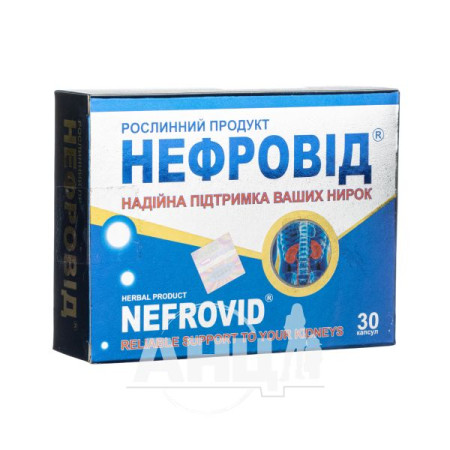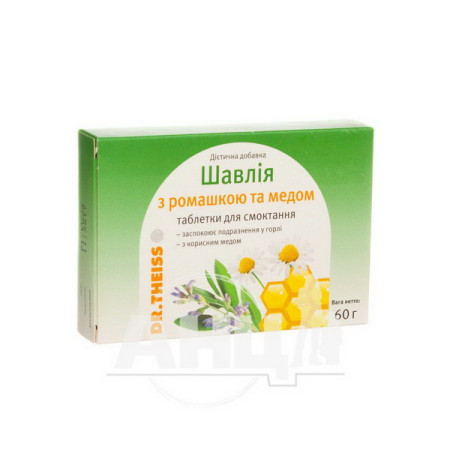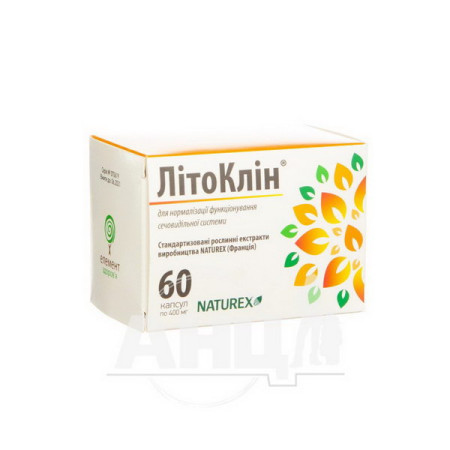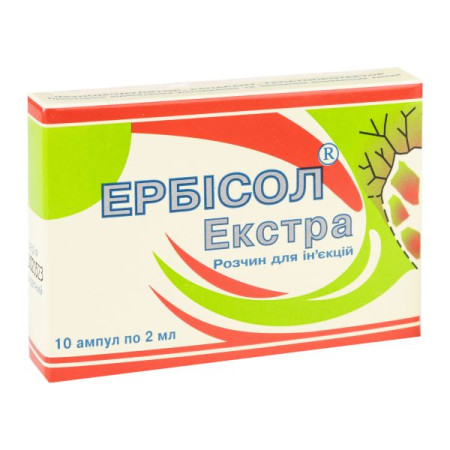Montelukast-Teva chewable tablets 5 mg blister No. 28

Instructions for use Montelukast-Teva chewable tablets 5 mg blister No. 28
Composition
active ingredient: montelukast sodium;
1 chewable tablet contains 4 mg or 5 mg of montelukast as montelukast sodium;
excipients: mannitol (E 421), sodium lauryl sulfate, hydroxypropyl cellulose, red iron oxide (E 172), cherry flavoring РНS-143671, aspartame (E 951), sodium starch glycolate (type A), magnesium stearate.
Dosage form
Chewable tablets.
Main physicochemical properties:
4 mg tablets: pink tablet with splashes of color in the shape of a triangle with rounded edges, embossed with “93” on one side and “7424” on the other, without visible cracks or chips;
5 mg tablets: pink tablet with color splashes, square shape, embossed with “93” on one side and “7425” on the other, without visible cracks or chips.
Pharmacotherapeutic group
Means for systemic use in obstructive airway diseases. Leukotriene receptor blockers. ATC code R03D C03.
Pharmacological properties
Pharmacodynamics.
Cysteinyl leukotrienes (LTC4, LTD4, LTE4) are potent inflammatory eicosanoids secreted by various cells, including mast cells and eosinophils. These important pro-asthmatic mediators bind to cysteinyl leukotriene receptors (CysLT) present in the human airways and cause reactions such as bronchospasm, mucus secretion, increased vascular permeability, and increased eosinophil numbers.
Montelukast is an orally administered active compound that binds with high selectivity and affinity to CysLT1 receptors. In clinical studies, montelukast 5 mg inhibits bronchospasm following inhalation of LTD4. Bronchodilation was observed for 2 hours after oral administration, and this effect was additive to that produced by β-agonists. Treatment with montelukast inhibited both the early and late phases of antigen-induced bronchoconstriction. Montelukast reduces peripheral blood eosinophil counts in adults and children compared with placebo. In a separate study, montelukast significantly reduced airway eosinophil counts (as measured in sputum). In adults and children 2 to 14 years of age, montelukast reduced peripheral blood eosinophil counts and improved clinical control of asthma compared with placebo.
In studies in adults, montelukast 10 mg once daily demonstrated significant improvements compared with placebo in morning FEV1 (change from baseline of 10.4% and 2.7%, respectively), morning peak expiratory flow (PEF) (change from baseline of 24.5 L/min and 3.3 L/min, respectively), and a significant reduction in total β-agonist use (change from baseline of -26.1% and -4.6%, respectively). Improvements in patient-reported daytime and night-time asthma symptoms were significantly greater than with placebo.
Studies in adults have demonstrated the ability of montelukast to add to the clinical effect of inhaled corticosteroids (change (%) from baseline for inhaled beclomethasone with montelukast compared to beclomethasone for FEV1: 5.43% and 1.04%, respectively; β-agonist use: -8.70% and 2.64%). Compared with inhaled beclomethasone (200 mcg twice daily, spacer device), montelukast demonstrated a more rapid initial response, although beclomethasone produced a greater mean therapeutic effect over the 12-week study (change from baseline for montelukast compared to beclomethasone for FEV1: 7.49% and 13.3%, respectively; β-agonist use: -28.28% and -43.89%). However, compared with beclomethasone, more patients treated with montelukast achieved a similar clinical response (i.e., 50% of patients treated with beclomethasone achieved an improvement in FEV1 of approximately 11% or more from baseline, while 42% of patients treated with montelukast achieved the same response).
In a 12-month placebo-controlled study in children 2 to 5 years of age with mild asthma and episodic exacerbations, montelukast 4 mg once daily significantly (p≤0.001) reduced the annualized rate of asthma exacerbations (AEs) compared with placebo (1.60 EAs and 2.34 EAs, respectively) [AEs defined as ≥3 consecutive days with daytime symptoms requiring β-agonist or corticosteroid use (oral or inhaled) or hospitalization for asthma treatment]. The percentage reduction in annualized EAs was 31.9%, with a 95% CI of 16.9, 44.1.
In a placebo-controlled study in children 6 months to 5 years of age with intermittent (but not persistent) asthma, treatment with montelukast 4 mg once daily or in 12-day courses for 12 months, with each course initiated at the onset of an intermittent episode, was continued. There was no significant difference between patients treated with montelukast 4 mg and those treated with placebo in the number of asthma episodes progressing to an asthma attack (defined as an asthma episode requiring an unscheduled visit to a physician, emergency room, or hospital; or treatment with oral, intravenous, or intramuscular corticosteroids).
In an 8-week study in children aged 6 to 14 years, montelukast 5 mg once daily compared with placebo significantly improved respiratory function (change from baseline in FEV1: 8.71% vs. 4.16%, change in morning PSV: 27.9 L/min vs. 17.8 L/min) and reduced the frequency of β-agonist use when needed (change from baseline by -11.7% vs. +8.2%).
In a 12-month study comparing the efficacy of montelukast and inhaled fluticasone for asthma control in children aged 6 to 14 years with mild persistent asthma, montelukast was non-inferior to fluticasone in increasing the percentage of days without rapid-acting rescue medication (primary endpoint). Over the 12-month treatment period, the percentage of days without rescue medication increased from 61.6 to 84.0 in the montelukast group and from 60.9 to 86.7 in the fluticasone group. The difference in the mean (LS) percentage increase in days without rapid-acting rescue medication between groups was statistically significant (–2.8 with a 95% CI of –4.7, –0.9), but within the pre-specified clinical non-inferiority range.
Montelukast and fluticasone also improved asthma control on secondary variables assessed over the 12-month treatment period.
FEV1 increased from 1.83 L to 2.09 L in the montelukast group and from 1.85 L to 2.14 L in the fluticasone group. The between-group difference in LS for the increase in FEV1 was -0.02 L with a 95% CI of -0.06, 0.02. The mean percent increase from baseline in FEV1 was 0.6% in the montelukast group and 2.7% in the fluticasone group. The LS difference from baseline in FEV1 was significant: -2.2% with a 95% CI of -3.6, -0.7.
The number of days on β-agonist decreased from 38.0% to 15.4% in the montelukast group and from 38.5% to 12.8% in the fluticasone group. The between-group difference in LS for the percentage of days on β-agonist was significant: 2.7 with a 95% CI of 0.9, 4.5.
The rate of patients with an asthma attack (an asthma attack is defined as a period of worsening asthma requiring treatment with oral steroids, an unscheduled visit to the doctor, emergency room, or hospitalization) was 32.2% in the montelukast group and 25.6% in the fluticasone group; the odds ratio (95% CI) was significant: 1.38 (1.04, 1.84).
The proportion of patients using systemic (mostly oral) corticosteroids during the study period was 17.8% in the montelukast group and 10.5% in the fluticasone group. The between-group difference in LS was significant: 7.3% with a 95% CI of 2.9; 11.7.
A significant reduction in exercise-induced bronchoconstriction (EIB) was demonstrated in a 12-week study in adults (peak FEV1 decrease 22.33% with montelukast versus 32.40% with placebo; time to recovery to within 5% of baseline FEV1 44.22 min versus 60.64 min). This effect was observed throughout the 12-week study period. A reduction in EIB was also demonstrated in a short-term study in children aged 6 to 14 years (peak FEV1 decrease 18.27% versus 26.11%; time to recovery to within 5% of baseline FEV1 17.76 min versus 27.98 min). The effect in both studies was demonstrated at the end of the once-daily dosing interval.
In aspirin-sensitive patients receiving current inhaled and/or oral corticosteroid therapy, treatment with montelukast compared with placebo significantly improved asthma control (change from baseline in FEV1 8.55% vs. -1.74% and change from baseline in reduction in total β-agonist use -27.78% vs. 2.09%).
Absorption: Montelukast is rapidly absorbed after oral administration. After oral administration of 10 mg film-coated tablets to adults in the fasted state, mean peak plasma concentrations (Cmax) were achieved at 3 hours (Tmax). Mean oral bioavailability is 64%. Oral bioavailability and Cmax were not affected by food intake. Safety and efficacy have been demonstrated in clinical studies with 10 mg film-coated tablets administered without regard to mealtime.
For the 5 mg chewable tablet, Cmax in adults was achieved 2 hours after administration in the fasted state. The mean oral bioavailability is 73% and decreases to 63% when taken with a standard meal.
After administration of the 4 mg chewable tablet on an empty stomach, Cmax is reached 2 hours after dosing in children aged 2 to 5 years. The mean Cmax is 66% higher and the mean Cmin is lower than in adults after administration of the 10 mg tablet.
Distribution: Montelukast is more than 99% bound to plasma proteins. The steady-state volume of distribution of montelukast averages 8 to 11 liters. In studies in rats with radiolabeled montelukast, passage across the blood-brain barrier was minimal. In addition, radiolabeled material concentrations in all other tissues were also minimal 24 hours after dosing.
Metabolism: Montelukast is extensively metabolized. Steady-state plasma concentrations of montelukast metabolites were not determined in studies using therapeutic doses in adults and pediatric patients.
Cytochrome P450 2C8 is the major enzyme in the metabolism of montelukast. In addition, cytochromes CYP 3A4 and 2C9 play a minor role in the metabolism of montelukast, although itraconazole (a CYP 3A4 inhibitor) did not alter the pharmacokinetics of montelukast in healthy volunteers given 10 mg of montelukast daily. In vitro studies using human liver microsomes indicate that therapeutic plasma concentrations of montelukast do not inhibit cytochromes P450 3A4, 2C9, 1A2, 2A6, 2C19, and 2D6. The contribution of metabolites to the therapeutic effects of montelukast is minimal.
Elimination: The plasma clearance of montelukast in healthy adult volunteers averages 45 mL/min. Following oral administration of radiolabeled montelukast, 86% is excreted in the feces within 5 days and less than 0.2% in the urine. This, together with the oral bioavailability of montelukast, indicates that montelukast and its metabolites are almost entirely excreted in the bile.
Pharmacokinetics in different patient groups. No dose adjustment is required for patients with mild to moderate hepatic impairment. Studies in patients with renal impairment have not been conducted. Since montelukast and its metabolites are excreted in the bile, dose adjustment is not considered necessary for patients with renal impairment. There are no data on the pharmacokinetics of montelukast in patients with severe hepatic impairment (Child-Pugh score greater than 9).
A decrease in plasma theophylline concentrations has been observed with high doses of montelukast (20 and 60 times the recommended adult dose). This effect is not observed with the recommended dose of 10 mg once daily.
Indication
Montelukast 4 mg chewable tablets are recommended for children aged 2 to 5 years;
Montelukast-Teva 5 mg chewable tablets are recommended for children aged 6 to 14 years:
as an additional treatment for bronchial asthma in patients with mild to moderate persistent asthma, which is not adequately controlled by inhaled corticosteroids, as well as with insufficient clinical control of asthma with short-acting β-adrenergic agonists used as needed;
as an alternative treatment method to low doses of inhaled corticosteroids for patients with mild persistent asthma who have not had a recent history of serious asthma attacks requiring oral corticosteroids and who are unable to use inhaled corticosteroids (see section "Method of administration and dosage");
prevention of asthma, the dominant component of which is exercise-induced bronchospasm;
relief of symptoms of seasonal and perennial allergic rhinitis; the risks of psychoneurological symptoms in patients with allergic rhinitis may outweigh the benefits of Montelukast, so Montelukast should be used as a reserve drug in patients with inadequate response to or intolerance to alternative therapy.
Contraindication
Hypersensitivity to montelukast or to any component of the drug.
Interaction with other medicinal products and other types of interactions
Montelukast may be administered with other medicinal products commonly used for the prophylaxis or long-term treatment of asthma. In drug interaction studies, the recommended dose of montelukast had no clinically significant effect on the pharmacokinetics of the following medicinal products: theophylline, prednisone, prednisolone, oral contraceptives (ethinylestradiol/norethindrone 35/1), terfenadine, digoxin, and warfarin.
In patients receiving concomitant phenobarbital, the area under the concentration-time curve (AUC) for montelukast was decreased by approximately 40%. Since montelukast is metabolized by CYP3A4, 2C8, and 2C9, caution should be exercised, especially in children, when montelukast is administered concomitantly with inducers of CYP3A4, 2C8, and 2C9, such as phenytoin, phenobarbital, and rifampicin.
In vitro studies have shown that montelukast is a potent inhibitor of CYP 2C8. However, data from a clinical drug interaction study involving montelukast and rosiglitazone (a drug metabolized by CYP 2C8) have shown that montelukast is not an inhibitor of CYP 2C8 in vivo. Therefore, montelukast does not significantly affect the metabolism of drugs metabolized by this enzyme (e.g., paclitaxel, rosiglitazone, and repaglinide).
In vitro studies have shown that montelukast is a substrate of CYP 2C8 and, to a lesser extent, 2C9 and 3A4. In a clinical drug interaction study, gemfibrozil (an inhibitor of CYP 2C8 and 2C9) increased the systemic exposure of montelukast by 4.4-fold. No dose adjustment of montelukast is required when used concomitantly with gemfibrozil or other potent inhibitors of CYP 2C8, but the physician should be aware of the increased risk of adverse reactions.
Based on in vitro studies, clinically important interactions are not expected with less potent CYP 2C8 inhibitors (e.g., trimethoprim). Coadministration of montelukast with itraconazole, a potent CYP 3A4 inhibitor, did not result in a significant increase in systemic exposure to montelukast.
Application features
Patients should be advised that oral Montelukast should never be used to treat acute asthma attacks and that they should always carry appropriate rescue medication with them. In the event of an acute attack, a short-acting inhaled β-agonist should be used. Patients should consult their doctor as soon as possible if they require more inhalations of short-acting β-agonists than usual.
Montelukast should not be abruptly substituted for inhaled or oral corticosteroids.
There is no evidence to suggest that the dose of oral corticosteroids can be reduced when montelukast is co-administered.
In isolated cases, patients receiving anti-asthma drugs, including montelukast, may experience systemic eosinophilia, sometimes with clinical manifestations of vasculitis, the so-called Churg-Strauss syndrome, which is treated with systemic corticosteroids. Such cases have usually (but not always) been associated with a reduction in the dose or withdrawal of corticosteroid therapy. The possibility that leukotriene receptor antagonists may be associated with the development of Churg-Strauss syndrome cannot be ruled out or confirmed, so physicians should be vigilant for the development of eosinophilia, vasculitic rash, worsening pulmonary symptoms, cardiac complications and/or neuropathy in patients. Patients who develop such symptoms should be re-evaluated and their treatment regimen reviewed.
Montelukast treatment prevents patients with aspirin-dependent asthma from using aspirin or other nonsteroidal anti-inflammatory drugs.
| Neuropsychiatric reactions, such as behavioral changes, depression, and suicidality, have been reported in patients of all ages treated with montelukast (see Adverse Reactions). Symptoms may be severe and may persist if treatment is not discontinued. Therefore, montelukast should be discontinued if neuropsychiatric symptoms occur. Patients and/or their caregivers should be alert to neuropsychiatric reactions and should report any such behavioral changes to their physician. |
Excipients.
Aspartame. Montelukast Teva contains aspartame, which is a source of phenylalanine. Patients with phenylketonuria should note that each Montelukast Teva 4 mg or 5 mg chewable tablet contains 0.5 mg of aspartame.
Sodium: This medicinal product contains less than 1 mmol sodium (23 mg) per tablet, i.e. essentially ‘sodium-free’.
Use during pregnancy or breastfeeding
Pregnancy: Animal studies have not shown harmful effects on pregnancy or embryonal/fetal development.
Montelukast-Teva should be used during pregnancy only if clearly needed.
Breastfeeding. Animal studies have shown that montelukast is excreted in human milk. It is not known whether montelukast is excreted in human milk, therefore Montelukast should be used during breast-feeding only if considered clearly necessary.
Ability to influence reaction speed when driving vehicles or other mechanisms
Montelukast is not expected to affect the ability to drive or use machines, however, drowsiness or dizziness have been reported very rarely.
Method of administration and doses
The medicine should be used by children under adult supervision. The tablets should be chewed before swallowing.
For children aged 2 to 5 years
Patients with asthma and allergic rhinitis (seasonal and perennial) should take 1 chewable tablet of 4 mg once a day. The time of administration is selected individually to relieve the symptoms of allergic rhinitis.
For the treatment of asthma, the dose for children aged 2 to 5 years is 1 chewable tablet (4 mg) per day, in the evening. Montelukast should be taken 1 hour before or 2 hours after a meal. No dose adjustment is necessary for this age group. Montelukast chewable tablet (4 mg) is not recommended for children under 2 years of age.
For children aged 6 to 14 years
Patients with asthma and allergic rhinitis (seasonal and perennial) should take 1 chewable tablet of 5 mg once a day. The time of administration is selected individually to relieve the symptoms of allergic rhinitis.
For the treatment of asthma, the dose for children aged 6 to 14 years is 1 chewable tablet (5 mg) daily, taken in the evening. Montelukast should be taken 1 hour before or 2 hours after a meal. No dose adjustment is necessary for this age group.
Patients aged 15 years and older are recommended to use Montelukast-Teva, film-coated tablets, 10 mg.
General recommendations
The therapeutic effect of Montelukast on asthma control is achieved within 1 day. Patients are advised to continue taking Montelukast even if their asthma is under control, as well as during exacerbations.
Special patient groups. No dose adjustment is required for patients with renal impairment or mild to moderate hepatic impairment. There are no data for patients with severe hepatic impairment. The dosage of the drug is the same for boys and girls.
As an alternative treatment to low-dose inhaled corticosteroids in mild persistent asthma
Montelukast is not recommended as monotherapy for patients with moderate persistent asthma. Montelukast should be considered as an alternative to low-dose inhaled corticosteroids in children with mild persistent asthma only in patients who have not had a recent serious asthma attack requiring oral corticosteroids and who are unable to use inhaled corticosteroids (see section 4.4). Mild persistent asthma is defined as asthma with symptoms more than once a week but less than once a day, nocturnal attacks more than twice a month but less than once a week, and normal lung function between attacks. If satisfactory control of asthma is not achieved after treatment (usually within one month), additional or different anti-inflammatory therapy should be considered, based on the asthma step-by-step treatment regimen. Patients should also be periodically assessed for asthma control. If children have difficulty taking the chewable tablet, the drug should be given in the form of granules.
Prevention of asthma in patients aged 2 to 5 years whose primary asthma component is exercise-induced bronchospasm
Montelukast is indicated for the prevention of exercise-induced bronchospasm in patients 2 to 5 years of age, which may be the primary manifestation of persistent asthma requiring inhaled corticosteroids. Patients should be reevaluated after 2 to 4 weeks of treatment with montelukast. If a satisfactory clinical response is not achieved, additional or alternative therapy should be considered.
Use of Montelukast-Teva depending on other asthma treatments
When Montelukast is used as add-on therapy to inhaled corticosteroids, Montelukast should not be abruptly substituted for inhaled corticosteroids (see section 4.4).
Children.
The drug is not recommended for use in children under 2 years of age.
Overdose
Cases of acute overdose of montelukast have occurred in post-marketing use and during clinical trials. Doses exceeding 1000 mg have been reported in adults and children (including a case of approximately 61 mg/kg in a 42-month-old child). The clinical and laboratory data obtained were consistent with the safety profile for adult and pediatric patients. In most cases of overdose, no adverse reactions were reported. The most commonly observed adverse reactions were consistent with the safety profile of the drug and included abdominal pain, drowsiness, thirst, headache, vomiting, and psychomotor hyperactivity.
It is not known whether montelukast is removed by peritoneal dialysis or hemodialysis.
Side effects
The effects of montelukast were evaluated in clinical studies in patients with persistent asthma:
5 mg chewable tablets – study involving approximately 1,750 children aged 6 to 14 years;
4 mg chewable tablets – study involving 851 children aged 2 to 5 years.
The effect of montelukast was also evaluated during clinical studies in patients with intermittent asthma:
4 mg granules and chewable tablets – study involving 1,038 children aged 6 months to 5 years.
In clinical trials, the following adverse reactions were observed commonly (≥1/100 to <1/10) in patients treated with montelukast and at a greater frequency than in patients treated with placebo.
Table 1
| Organ systems | Children aged 6 to 14 years (one 8-week study; n = 201, two 56-week studies; n = 615) | Children aged 2 to 5 years (one 12-week study; n = 461, one 48-week study; n = 278) |
| Nervous system disorders | Headache | |
| Gastrointestinal disorders | Abdominal pain | |
| General complications and injection site reactions | Feeling thirsty |
During clinical studies with long-term treatment of a limited number of adult patients (for 2 years) and children 6-14 years of age (for 12 months), the safety profile did not change.
A total of 502 children aged 2 to 5 years were treated with montelukast for at least 3 months, 338 for 6 months or longer, and 534 for 12 months or longer. The safety profile in these patients did not change with long-term treatment.
Post-marketing period
The following adverse reactions have been reported during post-marketing experience. The frequency of adverse reactions is defined based on data from relevant clinical trials and is classified as follows: very common (≥1/10), common (≥1/100 to <1/10), uncommon (≥1/1,000 to <1/100), rare (≥1/10,000 to <1/1,000), very rare (<1/10,000).
Infections and infestations: very common – upper respiratory tract infection.
From the blood and lymphatic system: rarely - bleeding tendency; very rarely - thrombocytopenia.
Immune system disorders: uncommon – hypersensitivity reactions, including anaphylaxis; very rare – eosinophilic infiltration of the liver.
Psychiatric disorders: infrequently - sleep disorders, including nightmares, insomnia, somnambulism, anxiety, agitation, including aggressive behavior or hostility, depression, psychomotor hyperactivity (including irritability, restlessness, tremor); rarely - attention deficit disorder, memory impairment, tic; very rarely - hallucinations, disorientation, suicidal thoughts and behavior (suicidality), obsessive-compulsive symptoms, dysphemia.
Nervous system disorders: infrequently - dizziness, lethargy, paresthesia/hypoesthesia, convulsions.
Cardiac: rarely – palpitations.
On the part of the respiratory system, thoracic organs and mediastinum: infrequently - epistaxis; very rarely - Churg-Strauss syndrome (see section "Special instructions for use"), pulmonary eosinophilia.
Gastrointestinal: common: diarrhea, nausea, vomiting; uncommon: dry mouth, dyspepsia.
Hepatobiliary system: often - increased serum transaminase levels (alanine aminotransferase [ALT], aspartate aminotransferase [AST]); very rarely - hepatitis (including cholestatic, hepatocellular and mixed liver damage).
Skin and subcutaneous tissue disorders: common: rash; uncommon: hematoma, urticaria, pruritus; rare: angioedema; very rare: erythema nodosum, erythema multiforme.
Musculoskeletal and connective tissue disorders: uncommon – arthralgia, myalgia, including muscle cramps.
Renal and urinary disorders: uncommon – enuresis in children.
General disorders: common: pyrexiab; uncommon: asthenia/fatigue, malaise, edema.
a This adverse reaction was observed with a frequency of “very common” in patients treated with montelukast and in patients treated with placebo in clinical trials.
b This adverse reaction was observed with a frequency of “common” in patients treated with montelukast and in patients treated with placebo in clinical trials.
c Frequency: “rare”.
Expiration date
2 years.
Storage conditions
Store at a temperature not exceeding 25 °C in the original packaging to protect from light, out of the reach of children.
Packaging
7 tablets in a blister, 4 blisters in a cardboard box.
Vacation category
According to the recipe.
Producer
Teva Operations Poland LLC.
Location of the manufacturer and address of its place of business.
80 Mogilska Street, 31-546 Krakow, Poland.
There are no reviews for this product.
There are no reviews for this product, be the first to leave your review.
No questions about this product, be the first and ask your question.










